While folks are all geeked out about Valentine’s Day, at our house, it’s all about Mardi Gras. The house has been decorated in purple, green, and gold and we’ve consumed our fair share of king cake – hello Gambino’s praline king cake! Given that Mr. Corkscrew hails from southern Louisiana, which is ground central for all things Creole, Cajun, and Mardi Gras, the cuisines of the region often show up in our kitchen. And since my mantra is “there is a wine for everything” I’ve spent a fair amount of time figuring out the perfect wines for all the Mardi Gras foods. I’ve worked my way through the likes of gumbo, red beans and rice, po-boys, and even boudin.
A little Mardi Gras Background
Mardi Gras is a way of life where Mr. Corkscrew comes from. Like schools close for the week. I’ve enjoyed hearing stories about Mardi Gras when he was growing up, particularly those related to Courir de Mardi Gras. Now this is different from the carnival type Mardi Gras many of us associate with New Orleans or Rio de Janiero. This is more of a family, communal celebration that was, and still is, practiced in rural communities and which traces its origins back to medieval France. Courir de Mardi Gras means “Fat Tuesday Run” in Louisiana Cajun/Creole French. As part of the Courir de Mardi Gras, members of a troop called a “Mardi Gras” would gather ingredients to use in preparation for a community gumbo to be made later that night. Le Capitaine, who was the leader of the Mardi Gras, would ride his horse while leading a group of other masked riders or runners and go from house to house gathering ingredients for the gumbo. The procession is many times accompanied by bands playing music.
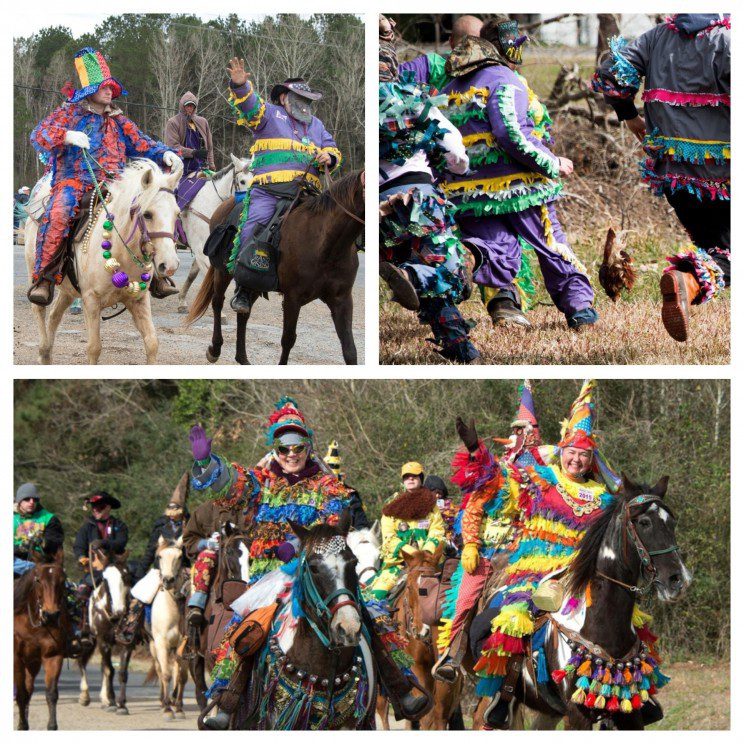
In order for the homeowner to provide the group with an ingredient for the gumbo, the troop would have to perform and earn the offering. Sometimes they would sing and dance, and other times they would participate in a chicken run. As chicken is one of the most important ingredients in a chicken and sausage gumbo, it was very much a prized ingredient. To earn a chicken, the homeowner would throw the chicken (or sometimes a duck or guinea) in the air and the members of the troop would have to literally run and chase it down. So imagine a bunch of drunk folks running around trying to catch a chicken! According to my husband, when he was a young boy, he had the record for two years straight catching the most chickens. He even caught a guinea once. Makes sense to put the kids up to it as I imagine the adults were feeling pretty nice from all the liquid revelry. Once the group gathered all of the ingredients for the gumbo, the community would get together to cook and eat the gumbo in a large, booze filled celebration that ended before Ash Wednesday and the beginning of the Lent season.
Gumbo
The official “soup” of south Louisiana, gumbo is a staple in our house. We typically make two different pots because Mr. Corkscrew only likes chicken (or duck) and sausage in his, but I like to add seafood to mine (in addition to the chicken and sausage).
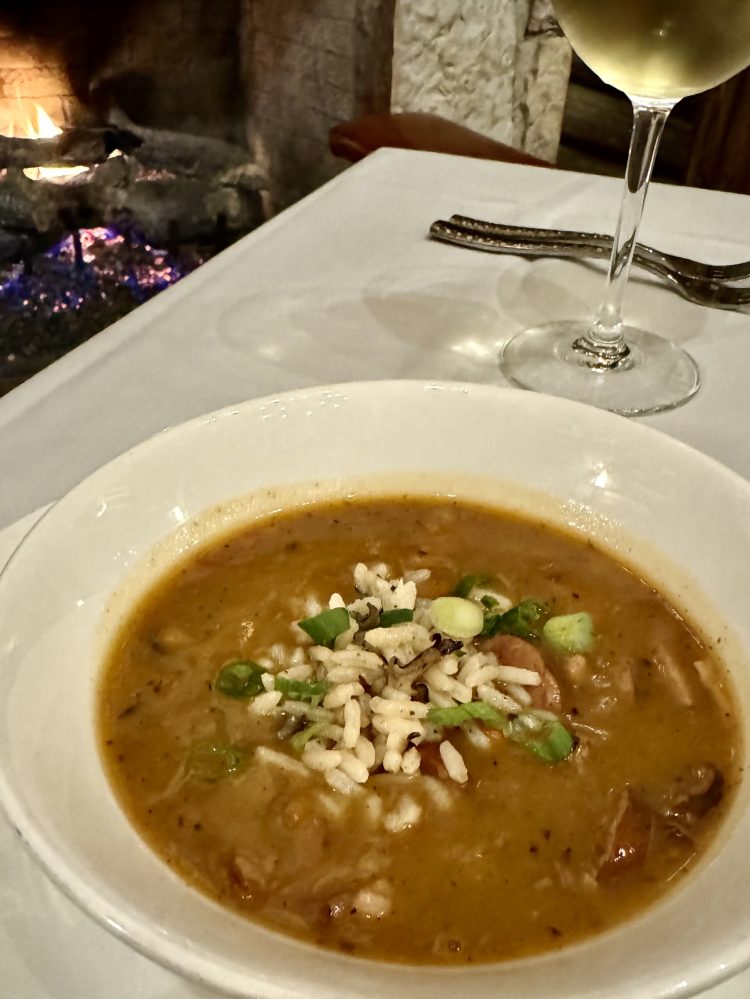
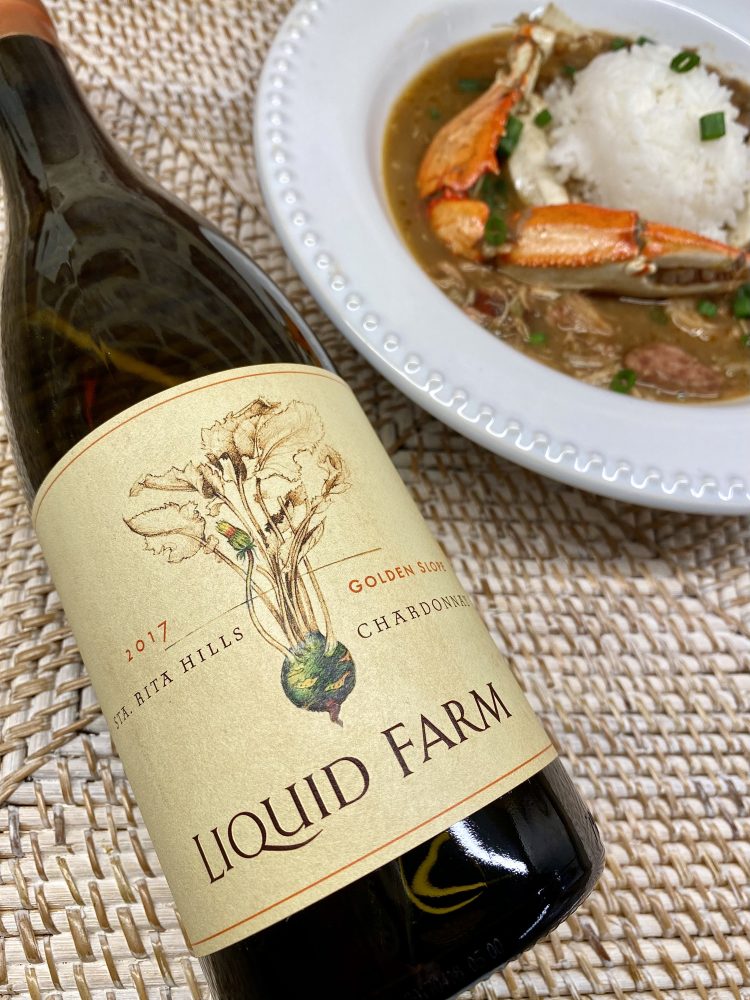
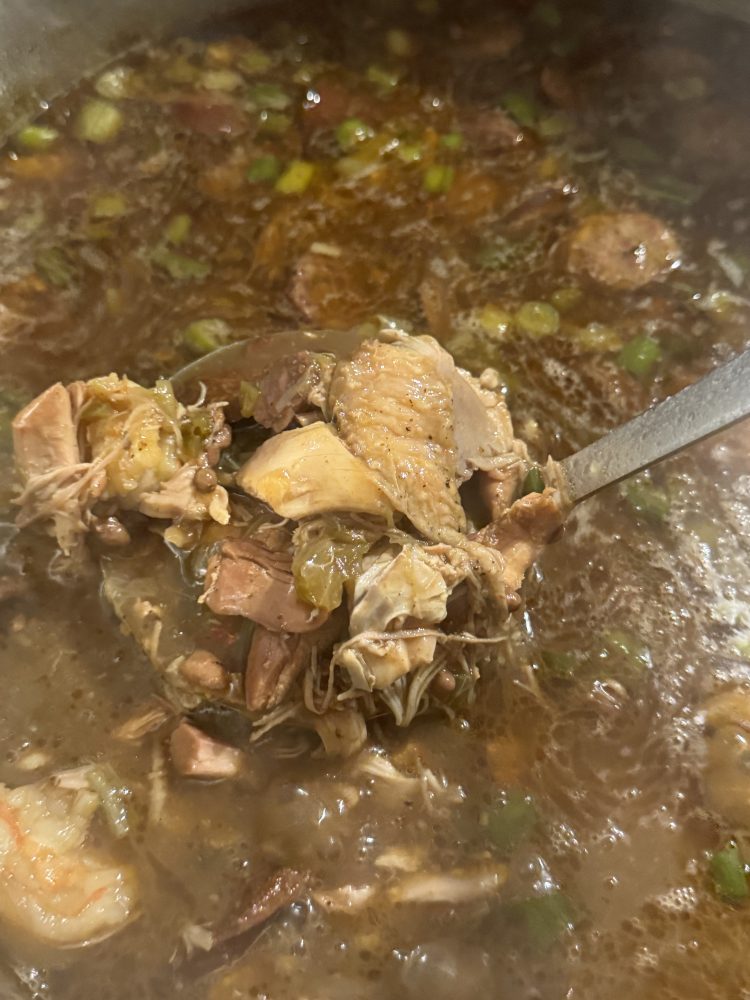
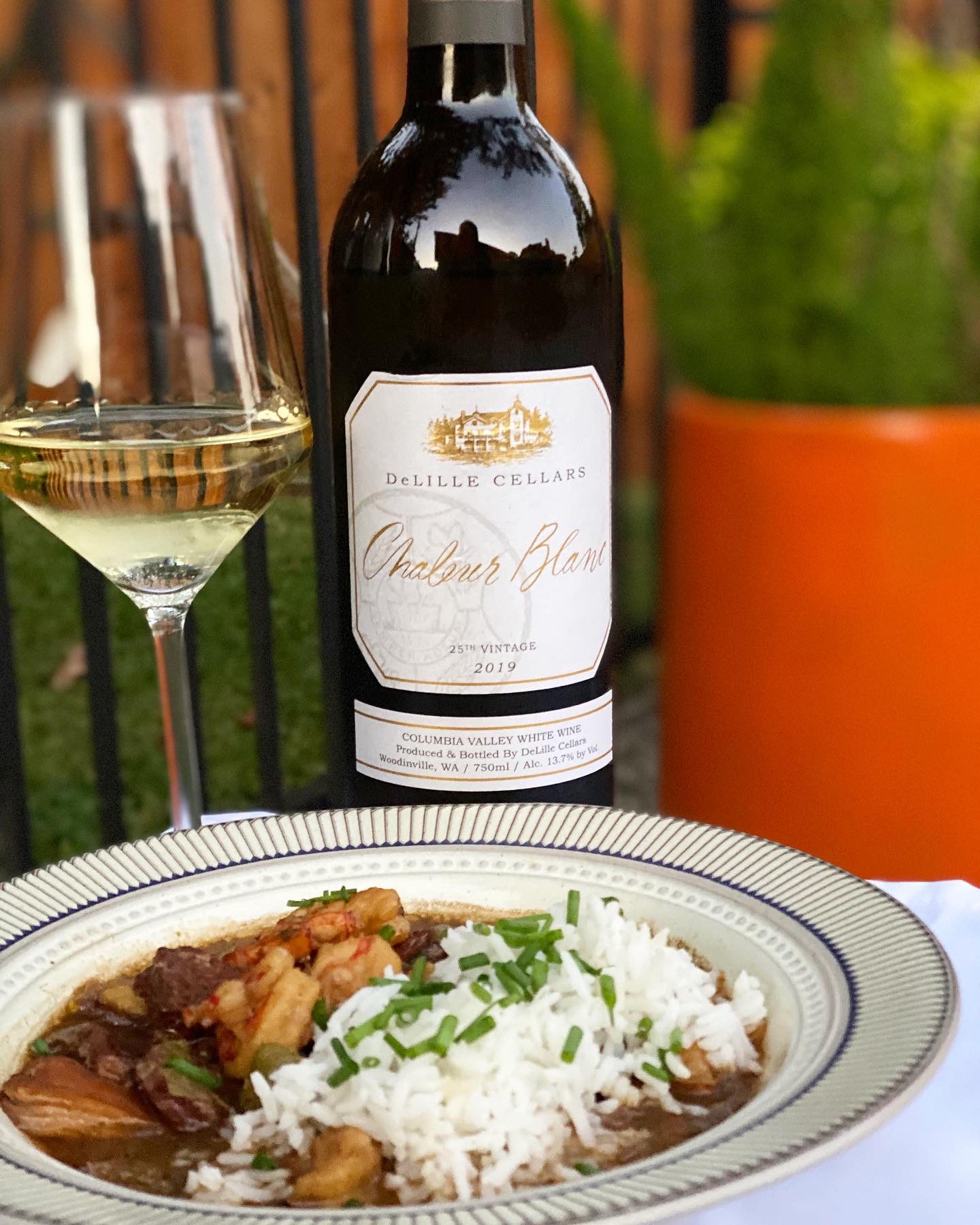
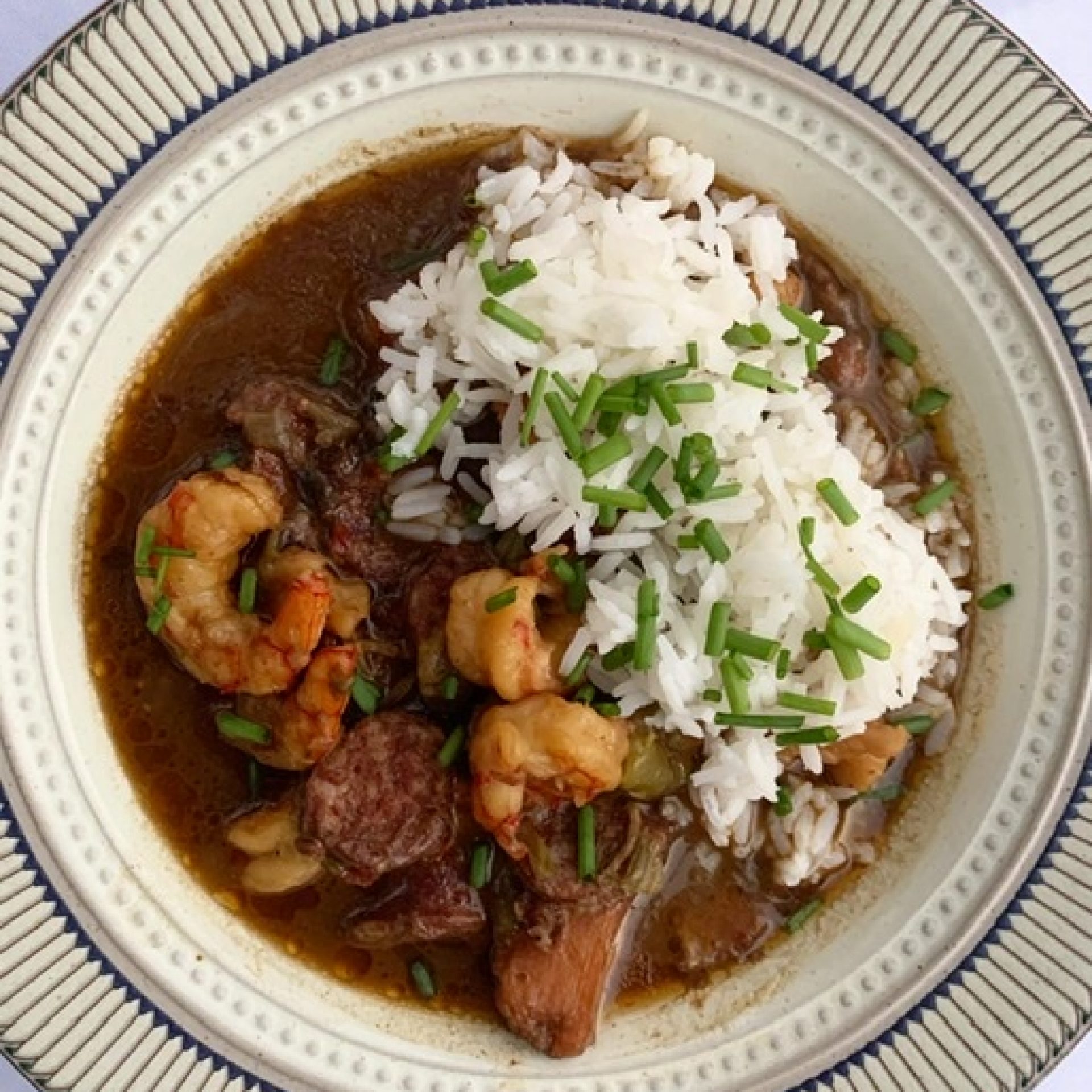
Sure, lots of people crack open a beer, but I still contend that wine is better. I said what I said. After a lot of “research” I found that my fave wine to pair is a Bordeaux Blanc that features BOTH Sauvignon Blanc and the Semillon for the pairing to work. The Sauvignon Blanc and the Semillon offer crisp, mineral notes and richness respectively, each doing its job in pairing with the components of the gumbo – the roux being the most important – and most difficult to pair. I’ve also enjoyed gumbo with Riesling, particularly if it has a little heat, and even a rounder style Chardonnay. In fact, it seems that I’ve been enjoying it more recently with Chardonnay. But the white Bordeaux style wine is definitely my favorite. For an American version of a classic Bordeaux Blanc, DeLille Cellar’s Chaleur Blanc is my go-to. It’s one of the few wines that I tend to repeat and even better that I can find at my local Total Wine.
Crawfish
Whether doing a good ole’ crawfish boil or making a tasty crawfish etouffee, a common feature is often spice. Believe it or not, one of my go-to wines for boiled crawfish is Gewürztraminer! Gewürz or others in the Traminer family. These wines tend to be highly aromatic, lower in acid, and higher in sugar. This makes a great pairing for spicy crawfish. Whether you venture over to France’s Alsace (some of my faves are Zind Humbrecht, Weinbach,and Trimbach) or go to the Pacific Northwest (Teutonic Wines features several tasty ones in their portfolio) I think you’ll love the combo.
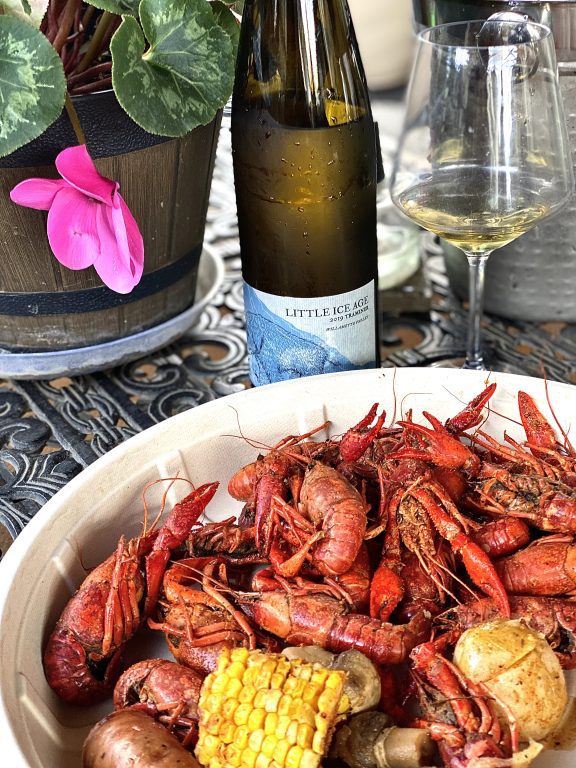
I also make some damn good crawfish étouffée. It actually one if the first things I ever made for Mr. Corkscrew when we started dating during my 3rd year of law school. I laugh at the fact that it took me more than a couple of hours to make it back then. Today, its an easy 45 minutes – and a lot of that is simmering time in the pot.
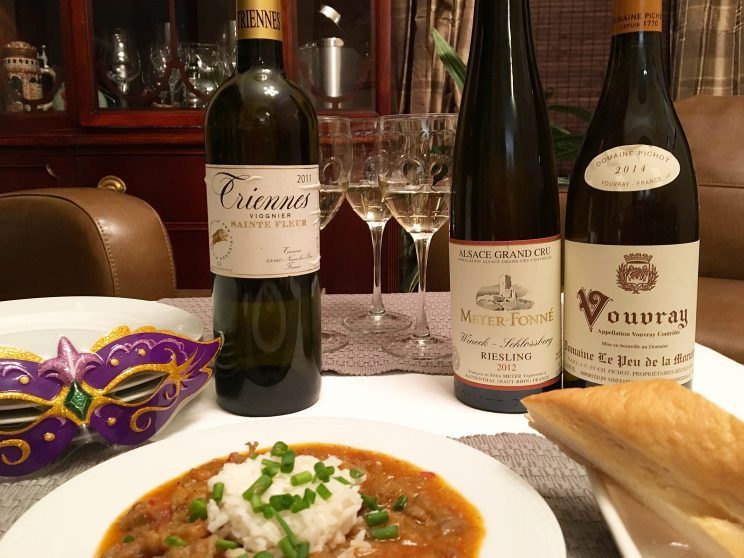
While many folks have their own spin on it (I start with caramelized onions in butter as opposed to a roux) a common feature – other than the crawfish – is that it packs some heat. Like spicy Asian and Indian cuisines or even Te-Mex, dishes such as this generally play well with aromatic white wines, whether they are dry or off-dry. Alsatian Riesling, Vouvray, Viognier and Torrontes all offer up floral and honey aromas and flavors that can combat the heat in a typical étouffée.
Boudin
Ahh, boudin. This is probably one of Mr. Corkscrew’s favorite things in the world. Very similar to “dirty rice” in a sausage casing, traditional boudin features pork, rice, chicken livers, and the Louisiana “holy trinity” of onions, bell peppers, and celery, and other spices and seasonings. Sometimes people add beef and creative twists will find some even made with seafood. As a kid, I couldn’t stand boudin or dirty rice. I’ve since come back from the dark side. I don’t have the same reverence for it as Mr. Corkscrew, but I appreciate well made versions, particularly when it’s smoked and not too spicy.
And yes, I’ve found different wines to enjoy with it. Given the spice that can be found in boudin, I often reach for similar aromatic whites that I pair with crawfish. Riesling, Vouvray, Gewürztraminer all fit the bill. I even love it with sweet Bordeaux.
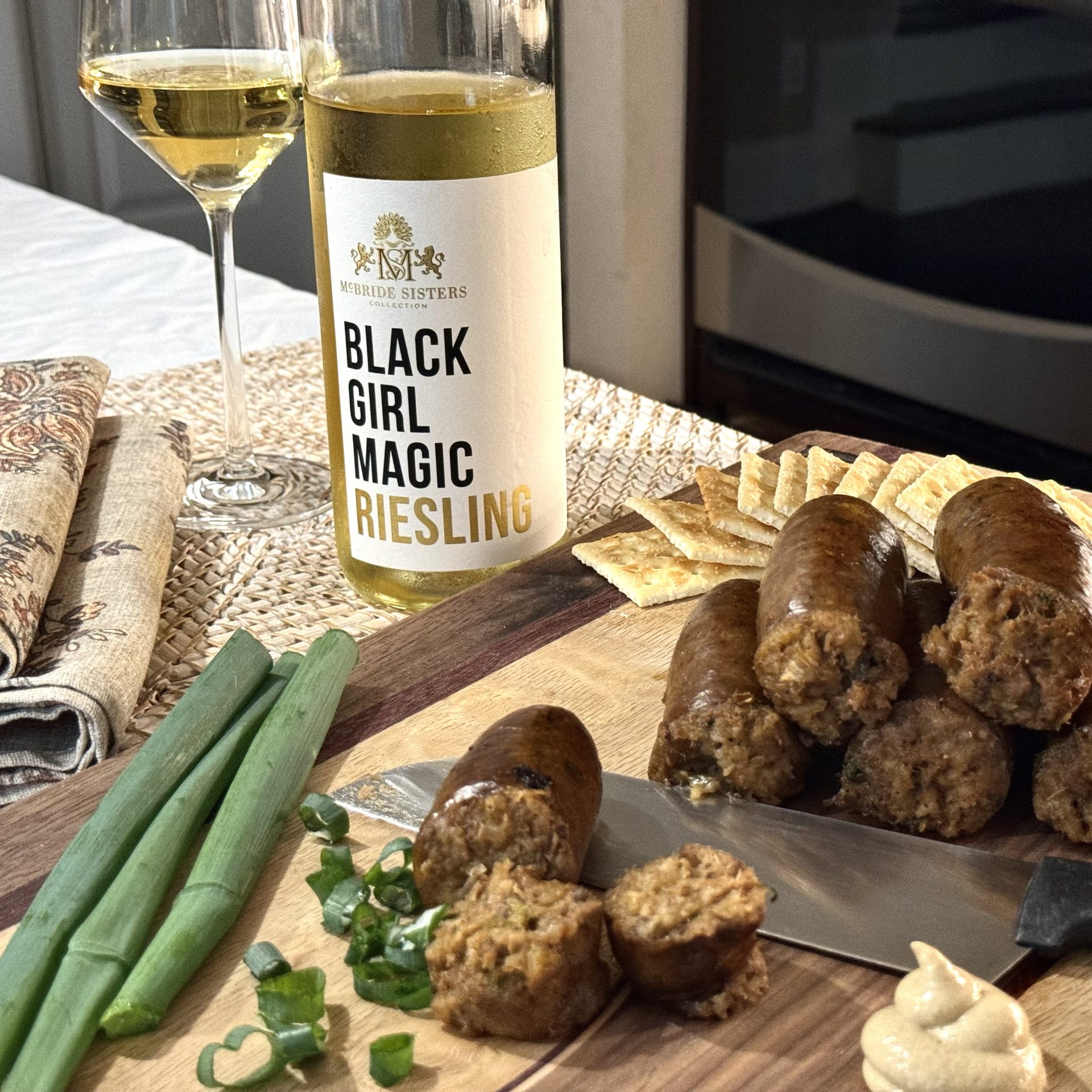
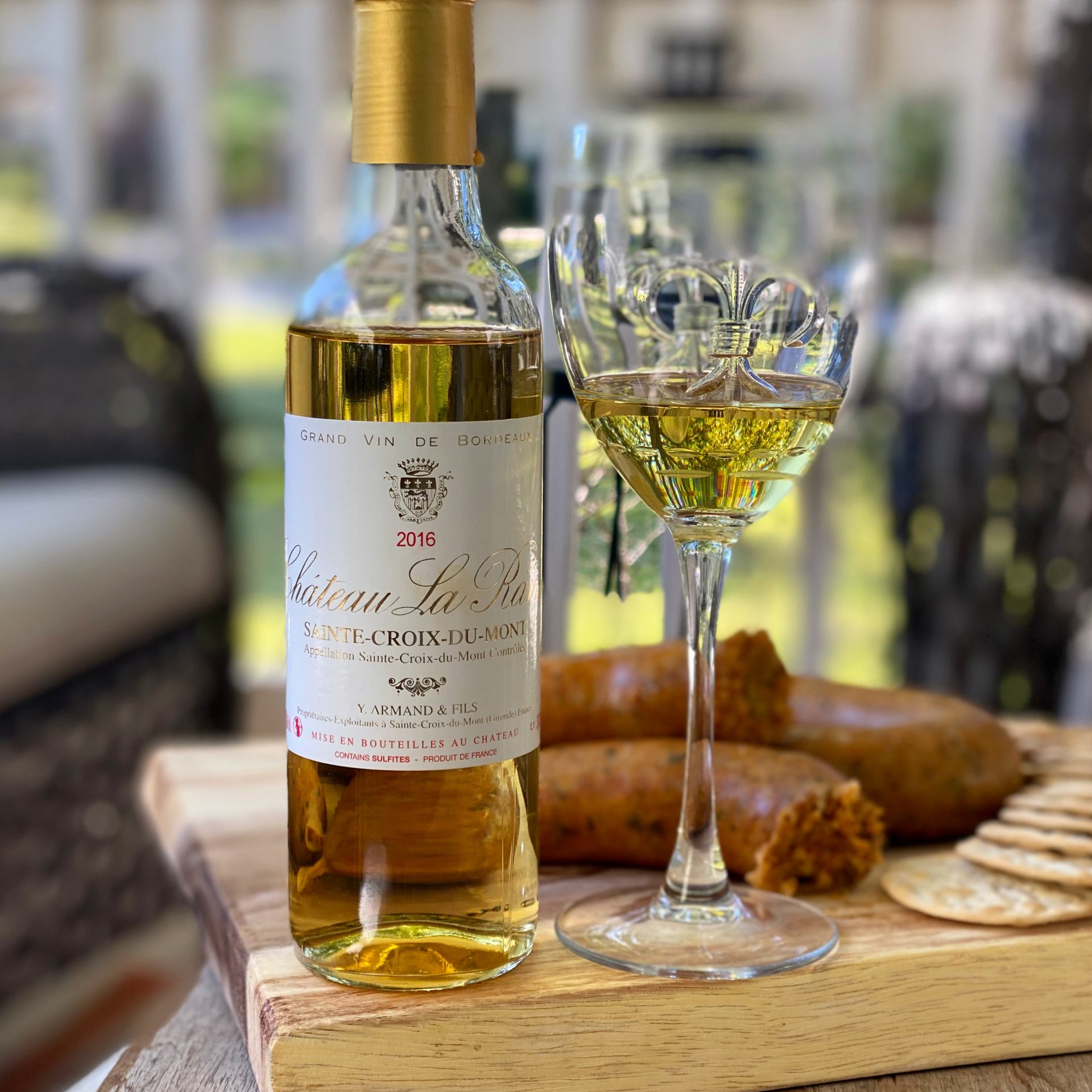
But if you want something red, particularly with all the pork and liver, I tend to reach for a lighter and fruitier red. Carbonic red wines are great here. For those not in the know, the carbonic style of winemaking features whole-clusters of grapes that are sealed inside the fermentation vessel to create an oxygen-free environment. The grapes begin to ferment from the inside out and eventually burst. You end up with a lighter, fresher, fruitier red wine. These tend to be easy-drinking wines that can take a chill. Ok, maybe I sometimes chug them. This method is commonly used in the Gamay focused Beaujolais region. But it’s not just Gamay that is made this way. Winemakers use a variety of grapes in these wines. I just had a Carbonic Counoise wine from C.L. Butaud Wines during a visit to the winery and it blew me away. Brought a bottle home and cant wait to pair with some upcoming crawfish.
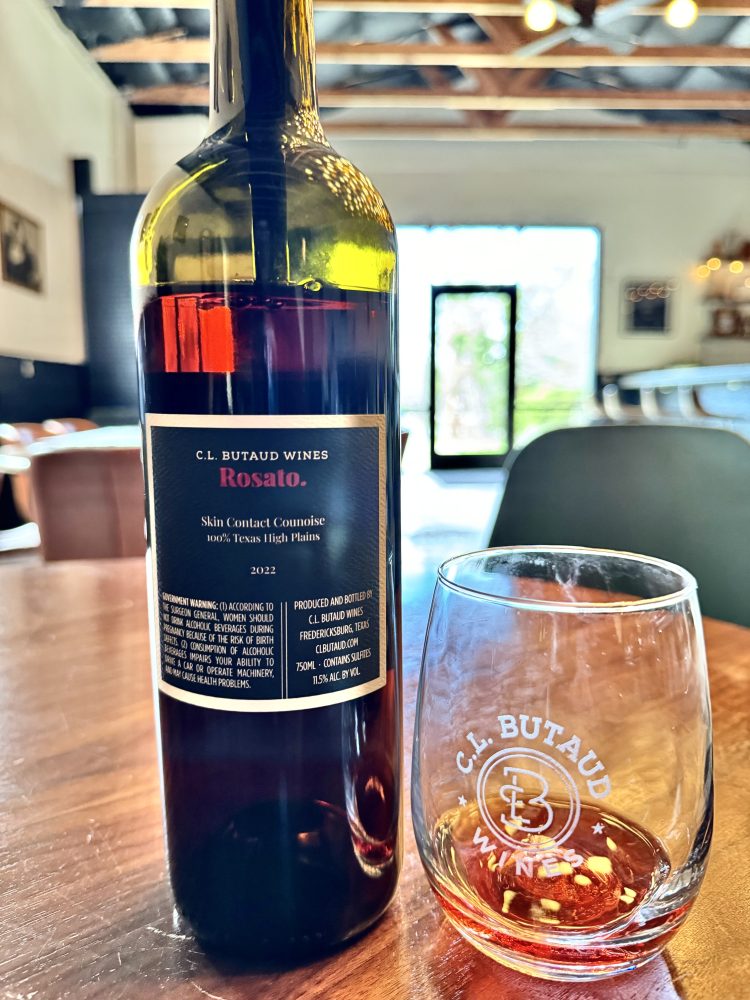
Other lighter red wines that play well here include Schiava (Italy), Zweigelt (Austria), Frappato (Sicily), and Cinsault (Languedoc).
Fried Seafood Po-Boy
Sure people love the “debris” style po-boys with roast beef and gravy or even sausage, but hands down, my fave is the fried seafood po-boy. Whether it’s fried soft shell crab, shrimp, crawfish, whatever, I’m a big fan. Not too long ago I had a po-boy with fried green tomatoes, and let me tell you! Delish!
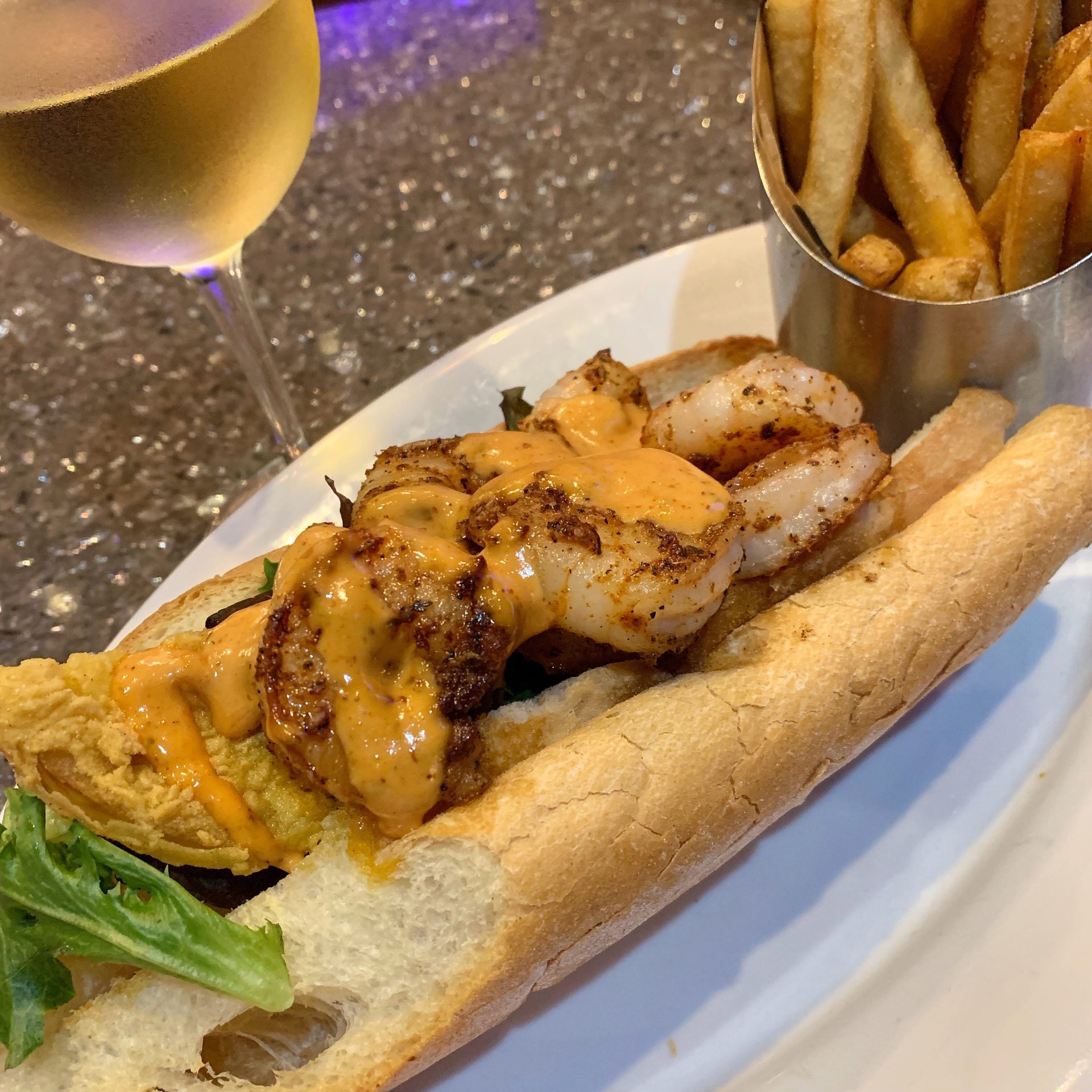
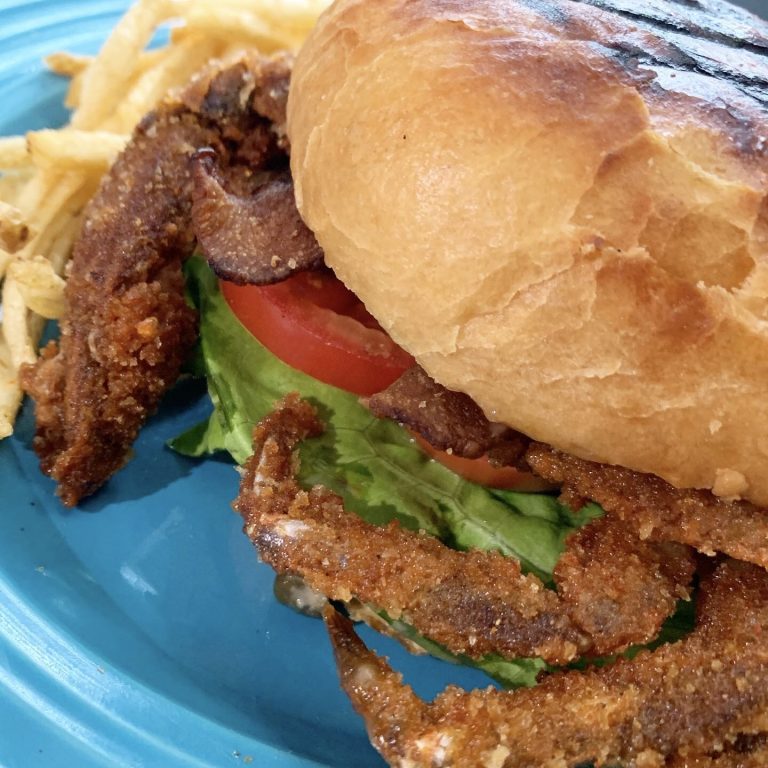
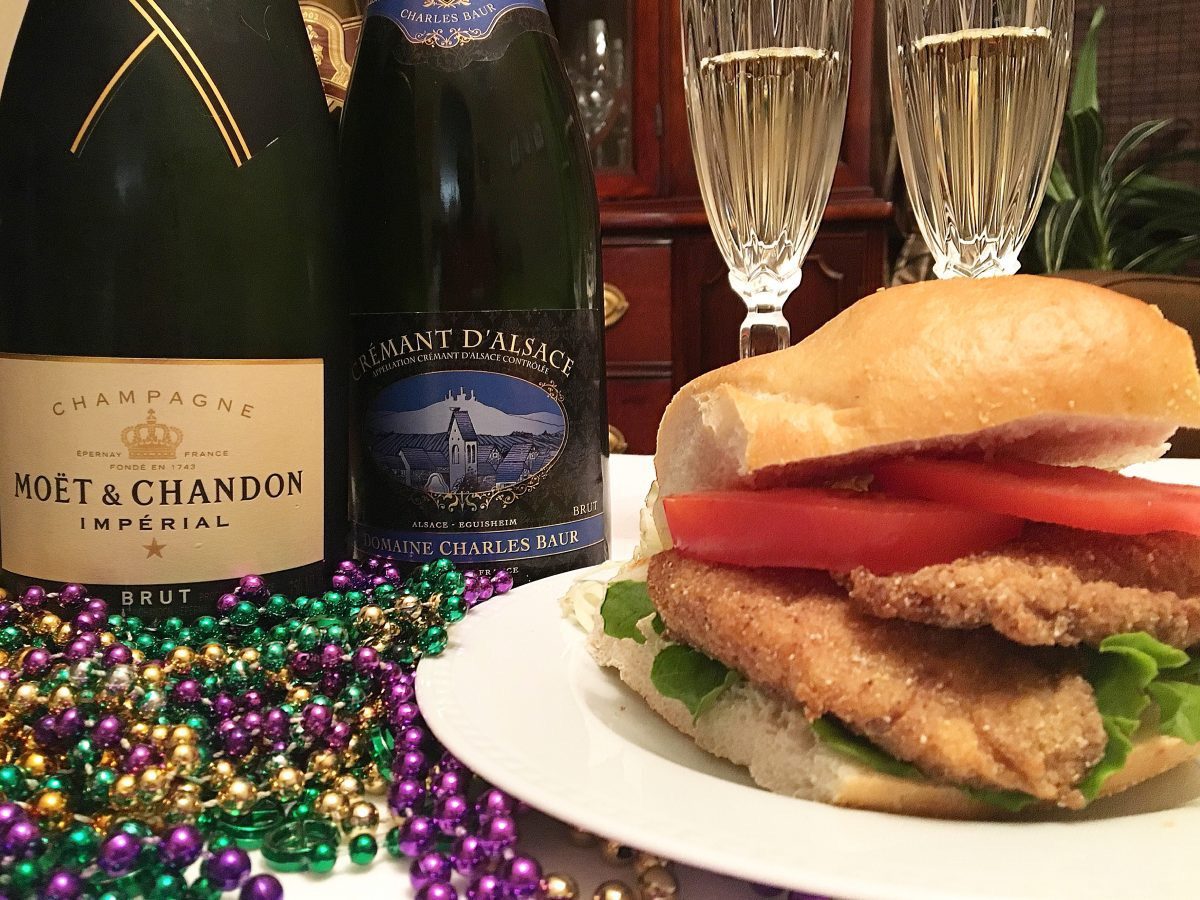
I say it all the time, but it’s true. Fried, salty food loves sparkling wine. I actually love a high brow / low brow combo so why not bust out fancy Champagne (I really like the blanc de blanc versions here, but whatever you enjoy) with a humble fried po-boy? If you need something more wallet-friendly, grab a Cava or a Cremant. If bubbles aren’t your thing (gasp!) or if you’re in the mood for something other than bubbly, head to France’s Loire Valley for Muscadet, Pouilly-Fume, or Sancerre or travel a little further east for Austrian Gruner Veltliner. The crisp acidity in these wines play quite well with fried deliciousness.
Red Beans & Rice
A Creole creation once considered poor man’s food, red beans and rice is a staple on many Louisiana restaurant menus. In fact, in New Orleans, locals know that Monday is red beans and rice day. Walk into a restaurant on Monday and you’re likely to find it as the day’s special. The Monday tradition stems from the fact that many years ago Monday was known as wash day. Because there were no washing machines and laundry took all day, families needed something that could cook on its own without a great deal of intervention. And since ham was customarily served on Sundays, the leftover ham and ham bone were thrown in with the beans to simmer on the stove all day.
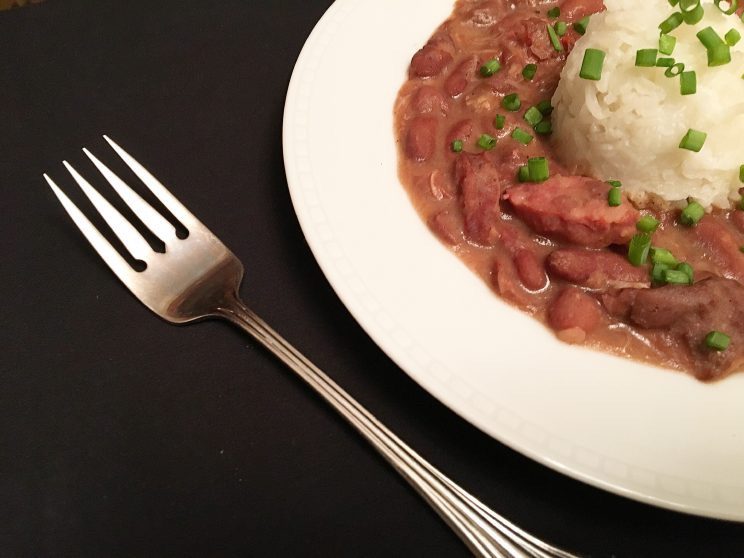
The beans and rice don’t offer up a great deal of flavor on their own and are generally pretty bland. It’s the meat and seasonings and spices that are cooked along with the beans that really give the dish its flavor. Even though a leftover ham bone is a classic addition, many folks use smoked sausage or smoked tasso (smoked ham) or even smoked turkey in theirs. See a “smoke” theme here? I don’t like to make mine too spicy – I figure folks can top with Tabasco or Louisiana Hot Sauce if they like.
I’ve paired a lot of white wines, so here’s some red wine to pair. I’d definitely steer clear of big, tannic reds such as Cabernet Sauvignon as there really isn’t enough fat in the dish (even with the sausage) to stand up to such wines. Instead, opt for a light, soft, fruit forward red. Think Grenache, Côtes du Rhône, Primitivo, Zweigelt, Gamay, Zinfandel, or a fruit forward (rather than earthy) Pinot Noir.
King Cake
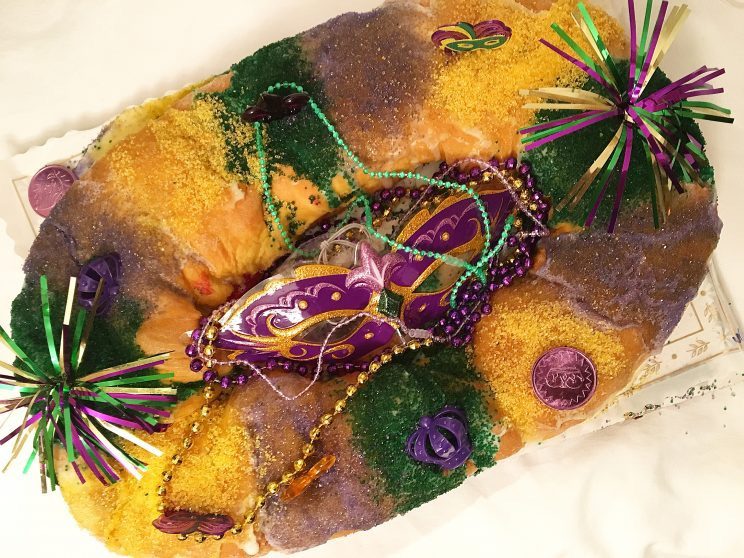
It ain’t Mardi Gras if you didn’t get a king cake to enjoy. This is a sugar rush, particularly if you veer from the traditional cinnamon king cake and get a filled cake with the likes of strawberry and cream cheese, Bavarian cream, praline, etc. Here, we’re trying to match sweetness levels. You want the wine to be as sweet as, or sweeter, than the dessert. If the dessert is sweeter than the wine, it can make the wine taste dull. And of course, we don’t want that! I love a Moscato d’Asti (not just a plain Moscato) or white port with king cake. You could also opt for with a late-harvest Riesling.
Happy Fat Tuesday y’all and cheers to wines for all the Mardi Gras foods!



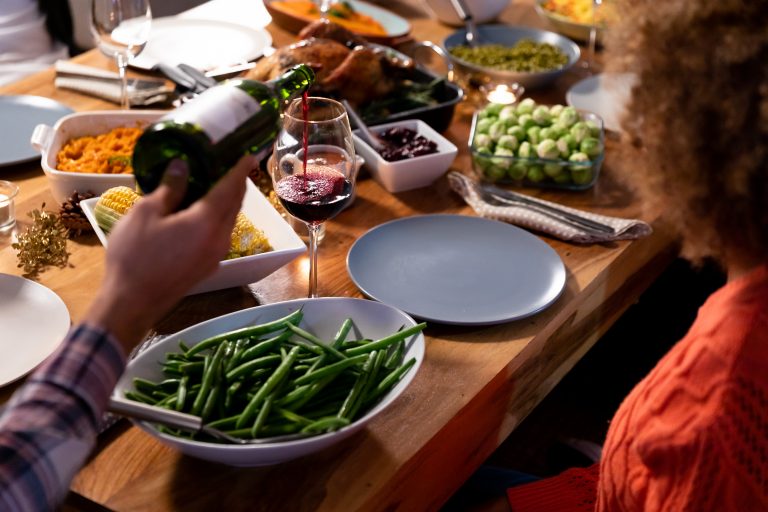


No Comments